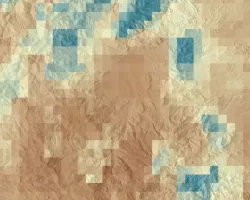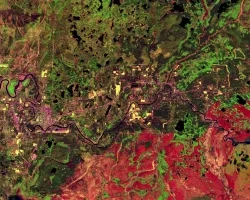
North Dakota and Georgia are two of the largest commercial agricultural producers in the United States, with a combined crop value of over 11 billion dollars. Agriculture management and sustainability practices—such as irrigation patterns and plant and harvest strategies—are crucial to long-term food security. Crop classification improves agriculture management decisions by distinguishing between different crop types and providing information on the climatic requirements, productivity, and environmental impact of each. This project collaborated with the USDA Agricultural Research Service (ARS) to evaluate the effectiveness of an integrated remote sensing approach to crop classification. The team compared multispectral Landsat 8 Operational Land Imager (OLI), Sentinel-1 C-Band Synthetic Aperture Radar (C-SAR), and Sentinel-2 MultiSpectral Instrument (MSI) data from the 2016-2017 growing seasons in North Dakota. In situ crop field data from ARS were used to test and calibrate the accuracy of the crop classification maps. The inclusion of radar in classification allowed for more precise and active monitoring in these crucial crop areas. Going forward, the ARS can advance crop classification methods and sensors to support larger study areas.



